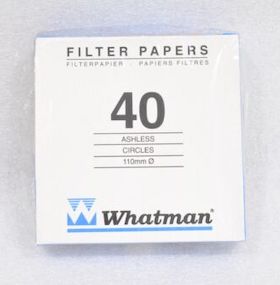
-----
Reduction/Elimination of stannic tin from bright tin and tin-lead plating baths
I have a bright tin and a tin/lead plating bath that I am having trouble analyzing. Both look cloudy which would indicate the presence of stannic tin. I talked to the manufacturer for different analysis methods for the past few months and none work. I've tried a polymer (polyacrylamide) to try to bind up and precipitate the stannic tin but that hasn't worked either. I would like to start getting more work into these baths but if I can't analyze them, then we can't use them!
So I wanted to know if anyone out there had a method of removing stannic tin in the presence of stannous tin. I don't have an AAS, I am mostly using wet chemistry. I've tried gravity filtering through Whatman paper but that didn't work either. My next move is to try to use a very fine syringe filter to remove the stannic.
Thanks
Chemist - Oxnard, California, USA
July 28, 2010
August 14, 2010
Hi Geronimo,
You may add in liquid flocculating agent to coagulate collodial tin(IV) follow by filtration to restore a clear tin plating bath. Such flocculating agent is available in most proprietary plating chemicals suppliers.
Best regards,
David

David Shiu
- Singapore
I am not sure how you can remove Sn(IV) from a Sn(II) solution without good filtration. However, I would suggest you eliminate the cause of the oxidation, so you won't have the problem. Sn(II) is normally oxidised to Sn(IV) by the action of oxygen from the air, so I suspect you are either using air agitation (hopefully not!) of you have a leak in your pipework. I came across this problem when electroplating Pb/Sn/Cu and Pb/Sn overlays on engine bearings and traced it to a leak in the external filter pump pipes.

Trevor Crichton
R&D practical scientist
Chesham, Bucks, UK
September 7, 2010
MR DAVID IS RIGHT.

Ajay Raina
Ludhiana, Punjab, India
September 10, 2010
There is always a combination of soluble and insoluble, colloidal tin IV in these baths in addition to the desired tin II. Minimizing air contact, and anti-oxidants in the plating bath should keep the oxidized tin to a minimum, but it cannot be avoided.
I believe that there are analytical methods to determine the total and stannous tin, and lead in these baths by titration, but these only measure the soluble tin and not the colloidal, precipitated tin. You should consult an old reference on analytical methods for tin plating baths.
The precipitate particles are very fine, mostly < 1 micron. Nonetheless, they will settle if the solution is left idle for a few days, so they are not truly colloidal. Filtration to a clear solution would require a microfilter operating continuously, because once the bath is saturated with tin IV, the precipitate will continue to form as any additional tin is oxidized.
Lyle Kirman
consultant - Cleveland Heights, Ohio
September 13, 2010
First of two simultaneous responses -- September 14, 2010
Thanks for the responses. I've tried using polyacrylamide as a flocculating agent for my analyses but that didn't work. I've asked around and I've been told not to remove the Sn(IV) just because it would allow for more Sn(II) to be oxidized. My procedure is something like the following from the tech data sheet.
5 mL plating bath
100 mL DI water
50 mL conc. HCl
0.5 g sodium bicarb (to expel air)
1 mL starch solution
This mixture is titrated with 0.1N potassium iodate until the blue black starch complex appears.
The problem I'm having is that you can't even see the black color forming when each drop of titrant is added. The whole solution just gets progressively more yellow in color and then nothing happens. I could add 50 mL of titrant and nothing happens.
Thanks.
- Oxnard, California, USA
The advice from plating solution suppliers is to microfilter the Tin solution with carbon filters to minimize the stannic precipitation . I have tried in the past with good results but I agree , the microfilter process should be continuously . The carbon filtration is 60 min recirculation .
Rigoberto Galvan- Monterrey, Mexico
Second of two simultaneous responses -- September 14, 2010
Just try formaldehyde (%10) or phosphoric acid. It should work. Trust me.
Best Regards
- Istanbul, Turkey
October 21, 2010
Q, A, or Comment on THIS thread -or- Start a NEW Thread
